Creators, Makers, and Doers: Kirsten Furlong
Posted on 11/4/15 by Arts & History
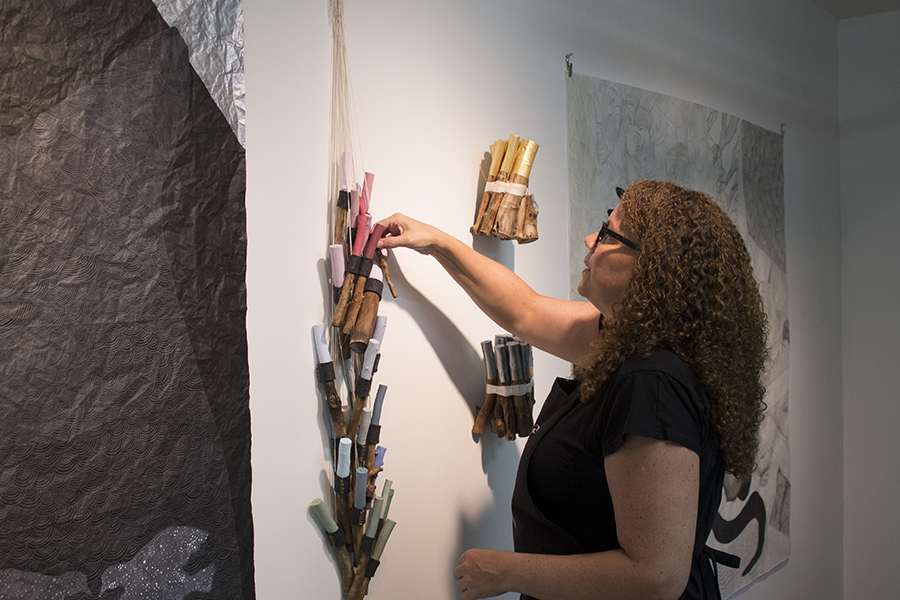
Kirsten Furlong, a painter, drawer, printmaker and creator, is an active artist collecting influences from personal experiences in the West and Midwest. Having lived and studied in both geographic regions; she creates within a world of questions concerning the relationship between the wilderness and the urban-scape, and the interactions of the creatures within them. She speaks to these curiosities and interprets them through her use of pattern, objects, repetition, and materials in which the natural world has inspired her. She currently lives, works and is involved in the arts community in Boise, Idaho.
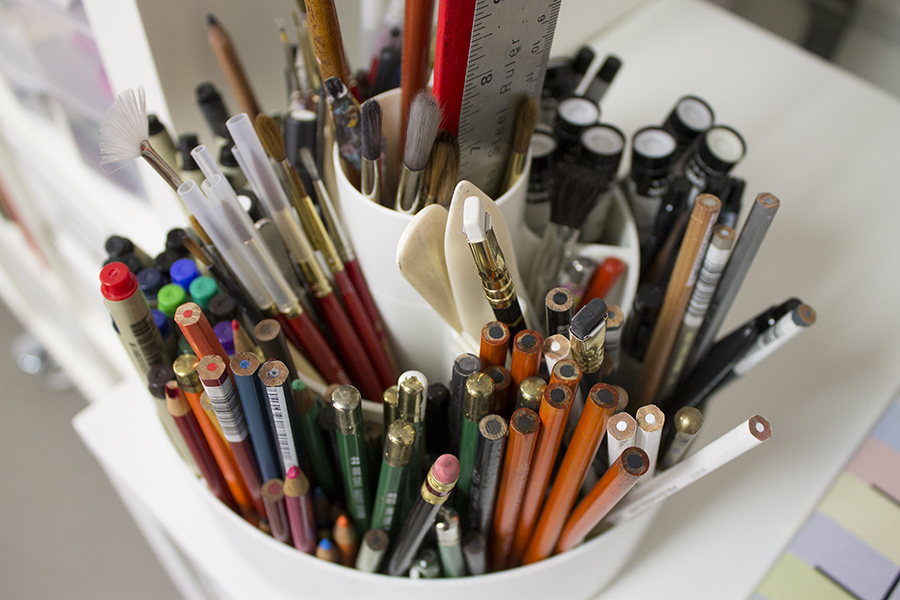
What is your preferred medium? What materials do you like to work with?
My background is in painting and drawing. That is what I started out doing in my undergraduate degree. Though I think everything that I do could still be described as painting or drawing, I am not necessarily using painting and drawing materials. I think drawing in particular could be used to describe most of what I do. Mostly, because painting has such a history and is coded with so many things that calling my work drawing makes me feel better rather than painting. I work with whatever medium helps express whatever I am working on at the time. I think all of them are closely related to conceptually what I am interested in. I use photography, printmaking, drawing, painting all combined together. I feel like most of what I do now is grounded in the practice of painting and drawing, but again as an undergraduate I started doing very traditional printmaking. I did zinc plate etching, traditional intaglio process, which at the time I thought were so labor intensive that I didn’t really pursue them. Then when I came to Boise State, I started pursuing printmaking more. I was focusing on polyester-plate lithography.
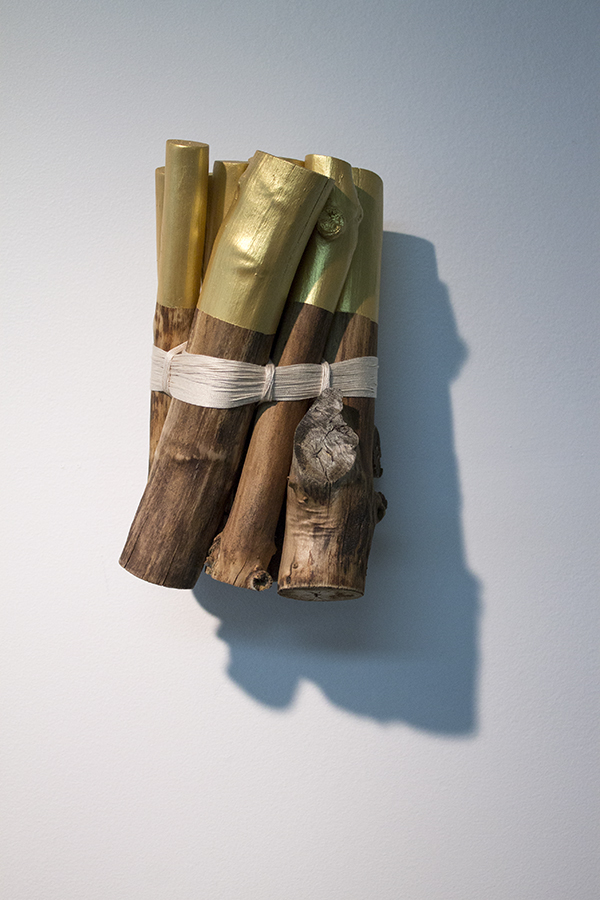
Can you describe some of your current work?
In graduate school, I really solidified what I was interested in making work about. In between undergraduate and graduate school, I worked for a well-known nature photographer in his gallery. At the time I was really thinking about the weirdness of how people relate to representations of the natural world. All of this guy’s work was pictures of animals and landscapes. I was interested in how people were talking about the images and their feelings about the place or thing. There is strangeness to that process and it kind of stuck in my mind, although I wasn’t really thinking about it too specifically until I went to graduate school. There I really started exploring ideas about the representation of the natural world. Also, I came to the west from the mid-west and I was thinking about the different ways in which people relate to the natural world and the landscape. I think people don’t always think about how certain ideas are deeply rooted in different areas. These ideas were the basis of the work that I started doing and what I am still working on now.
In the last two years, since I had my residency at the Sesqui-Shop, my media approach has really expanded. I have been working on projects that relate to my experience there. The concept that tied that whole project together was an essay by W.S. Merwin called “Un-chopping a Tree.” I used that as something that tied all of the work together. The essay basically gives the reader directions on how to put a tree back together that has been cut down. Of course it is totally impossible, but he is describes it and as you are reading it you understand just how impossible something like that would be. The writing is a metaphor for whatever we do to the natural world, we can’t really take it back, even if we try to mimic the process, you really can’t. I hadn’t really articulated this idea before then in my work. I don’t really view my work as environmental activism, but I think by just making the work and creating the images it is in a way. By reading that, it gave me a sense that the work is a metaphor for my hope for all of the horrific environmental issues that are coming down on us right now. For that series, I was connected with the forestry department, so I was able to get the branches and limbs that were being cut from the trees around the city. I started to use them to create installation pieces. Every piece that I made, in some way, I was trying to put the tree back together. I am creating this image that is an artistic whole, but it obviously doesn’t replicate a tree. I hope that is what people understand when they look at the work. That series opened up my work. I hadn’t worked with found objects or wood as a medium, but I think the linear aspect of the branches worked for me like drawing. In a way using the limbs of the trees really replaced the linear marks of a drawing. A lot of the mark making that I do is related, not directly, to things like tree rings, or the building up of grass on a nest, or a seashell building on itself. I feel that in my drawing process, I am mimicking those kinds of processes even though the image may be abstract.

Can you elaborate on your inspiration for the images you create?
A lot of the inspiration has to do with my own experiences and being in various places, as varied as just examining things in my own back yard. I am really just fascinated in intensely looking at things. You don’t have to go to any special place to see or observe something that nobody has ever seen. I find that pretty fascinating and interesting as an artist. As an artist how could you ever run out of things to think about? There are just so many things that haven’t been described in writing or in images.
Another thing that I have been interested in doing is attending residencies where I can visit different kinds of places and make work in that place. I did a residency at Denali National Park. It was the perfect place for thinking about this whole idea. I had never been to Alaska. Going there was, in a lot of ways, mimicking the ideas surrounding my work. It is such an iconic place. The mountain itself, Mt. Denali, is such an iconic thing and there are so many photographs of it. When you are there you rarely see it. The way you move through the park is by bus, so it’s not like Yellowstone with millions of cars going through and stopping when you see a bear, but you have to ride the busses. Of course the busses stop at certain points that they stop at every time and everyone gets off and takes a photo. It was an interesting place to visit while thinking about how people encounter the natural world and how they represent it in their own snapshots. The other big thing is that the park is known for its mega fauna, the bears and wolves. Just being able to see them in that environment is amazing, but also super terrifying. I really chose to focus, in the work that I made, not on the mountain or the bears or wolves, which are the things that the other artists were focusing on. I, instead, focused on a lot of the really tiny things like the plants and the tundra, the lichen, the moss, and the rabbits and squirrels. The things that are the ecological basis for the other mega fauna.
I have done several other residencies in other places. It is an interesting experience because I can continue to do my own research on the historical aspects of the representations of nature, but I can also have my own observational experiences. I can also have the experience, with most residencies, to hear other peoples reactions. A few of the residencies that I have done, in Wyoming, have had artists that have never been in the West before. Some of the residencies have been on ranches, so hearing about the different experiences from both sides of the experience from the people who run the residency and the artists that come to visit. I like to process that information into my work as well.

What keeps you working?
I think a lot of artists are their own worst critic. I am definitely that way. There are so many amazing things, whether it’s an artwork or things that you could see in the landscape that are so visually stunning or compelling, that you constantly have something to judge your work against. I tend to just move from one body of work to the next. I am always trying to make something that seems better, or more clearly articulates something, or seems more visually interesting. I never make something and think it is the best thing I have ever made because if I did, I probably would feel as though I don’t need to make anything else. Every time I make something I am always very critical of it. Not in a negative way but in a positive way. I just want to make the next thing. The fact that I am not able to make work all of the time, because I have a job, drives me. When I do have time to work I tend to work really hard because I know there will be a lot of weeks of the year where I am not going to be able to be in the studio. I like to take advantage of the time that I do have. That is just how I work. I’m sure I would adjust if I was able to make work all of the time, I would adjust and work differently, but not having unlimited time makes me work pretty hard.
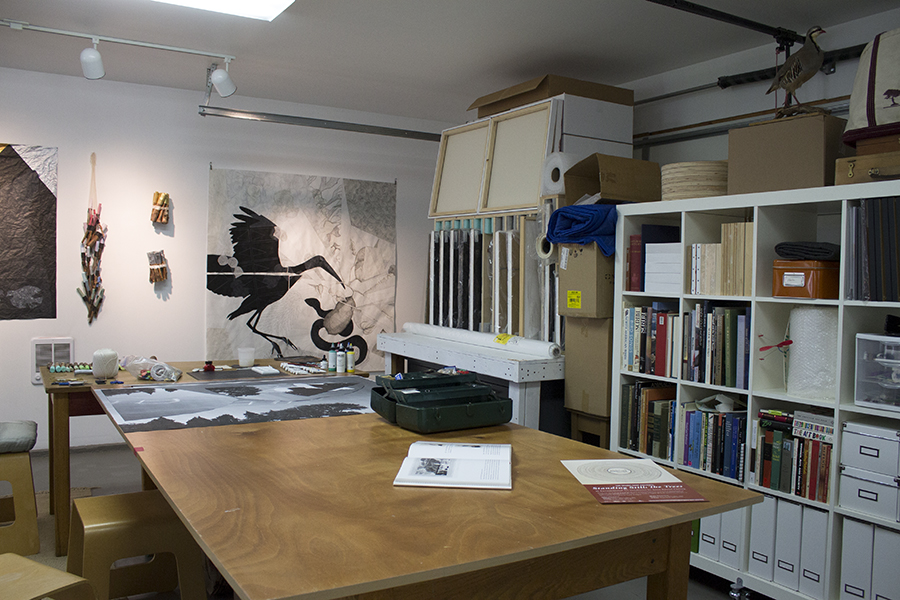
Can you talk about your process of creating work?
I don’t do, like a lot of artists do, any sketching or plotting out the image ahead of time. The way that the image, something two dimensional, the image comes through the actual process. However, when I sit down to do something, I have already either gathered the imagery, whether physically gathered in a book or an image, or I have just mentally thought about it. Especially the drawings come from the process of drawing itself. The repetition and following the physical aspect of the drawing. The other big thing is that I tend to work in a series. I almost never have just one thing that I start and finish. I have multiple things that I work on all at once. Maybe I will finish most of them, but I usually don’t leave things unfinished. I also tend to show things in a series, whether it is an installation or a series of a body of work. For the way that I work it is much more effective to not try to tell something in one piece, but have a grouping of things. Regardless of how I am working, I am always working in series. It is the most common way that I go about making stuff.
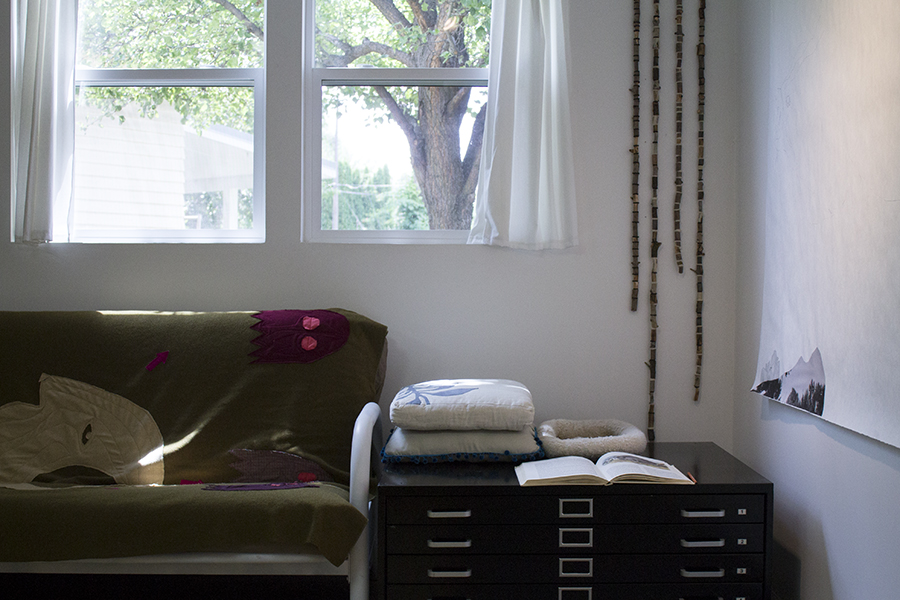
What does your working schedule look like?
It is totally shifting during the whole year. During the school year, I am at Boise State. I feel really lucky that I have a job that is so closely aligned with what I do. I don’t see a huge separation. It is not like there I am doing one thing and here I am doing something totally different. They are really closely related. During the school year when I am teaching and running the gallery I am usually doing more research based work like reading, collecting images, and thinking about my work. I am also doing all of the administrative things that you have to do as an artist, whether it’s making budgets or writing grants or applying to shows or looking for different opportunities. Then I do work in short bursts in the studio on weekends or a few evenings, but that is more sporadic. In the summer I work full time in the studio. Some days I might work ten hours with breaks and some days I might just work for a couple of hours. Usually an hour or two every day I am still doing those administrative things. A lot of artists, I think, hate that part or just don’t do it, but it is really a detriment to their work in the end. To me, that part is crucial, even though the actual writing of the proposal or application might be not so fun, that could be where the next body of work comes from. I have to think about it that way. The work schedule is pretty varied. Probably every week of the year there is a slightly different schedule of what I am doing.

Could you say that you have been able to make a living as an artist?
Well, yes. I make a living as an artist because I pursued an undergraduate and graduate degrees and working in a galleries. That led to me having the position that I have now. By pursuing that education I was pursuing being an artist. If I had to live only on the money that I make to support my studio practice, then I would have to live a much different life. It wouldn’t be very much. However, if I wasn’t working full time then my studio practice would look much different and I would probably pursue different opportunities. I would say yes, I do make a living as an artist. Just part of my life as an artist is being a teacher and a gallery director. It is interesting when you work full time but you know other artists that are just doing their work. It is so hard to know what would be better. Sometimes in the summer when I am working in the studio and I don’t have to commitment of going to the office, it obviously frees a different way of working, but I think it is really hard for me to sustain that. I am kind of a workaholic, so teaching and running a gallery and keeping a studio practice keeps me really busy, but that is how I thrive. I would have to really adjust the way that I approach my whole career if I didn’t have a full time job. Sometimes I think I just can’t wait to work in the studio all of the time, but I get so much out of the other things that I do that are closely related to my work. I can’t really separate them. It all feeds into what I do. There are probably artists that have what they would call a day job that is totally separate and they compartmentalize it into just having a job that is totally separate from their artistic practice, but I don’t think about it that way. It is all too intertwined, which is good for me.

What do you think about the art community in Boise?
I have lived here since 1997 and in my perception things have really ebbed and flowed as far as what is happening or what is rising to the top and what is now. I have always felt that for a city the size of Boise, there is a thriving and interesting group of artists that have chosen to live here. There have always been a few dedicated people who have spaces whether they be galleries or studios or arts related businesses that keep things interesting and give artists a place to show and people a place to come and look at things. Of course, I always want more because as an artist you always need more. You need places to show work and you need opportunities to interact with people. In that ebb and flow, recently things seem to be pulling back. Places have closed even though the economy seems to be recovering, but there is always something good coming around the bend. I get skeptical when I hear people complaining incessantly about there being no galleries and no opportunities, because in a way you have to realize this is Boise, ID and there is only so much that can happen. It can only support so many galleries. If that is what you need or want then there are other places and even if you are here there is still a whole world of opportunities.
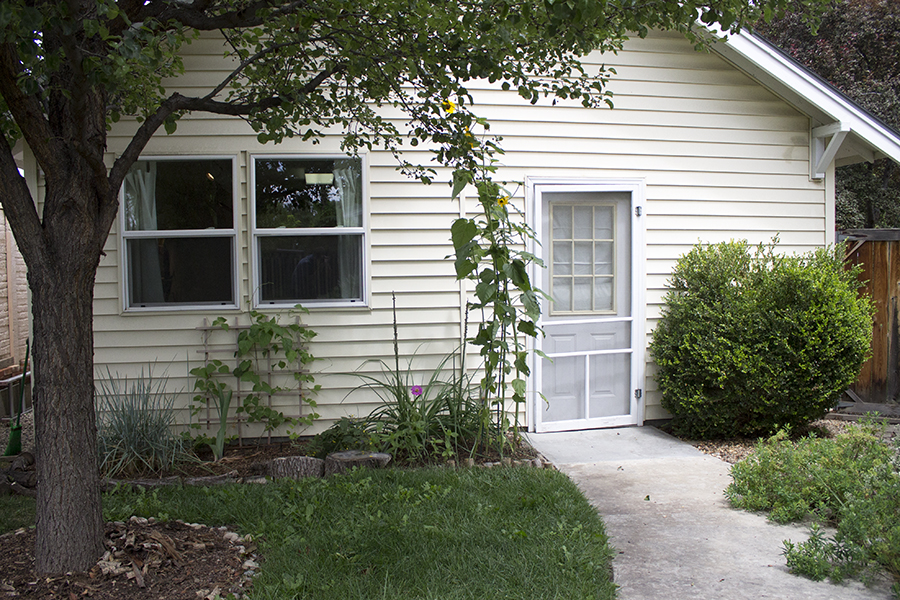
Can you recognize any specific resources missing here for artists?
One thing that I can take from my own experience is the difficulty of trying to find a space to work in. When I was just out of graduate school, finding a place that was suitable to work and that I could afford was pretty difficult. I had to move my studio around many times. That is hard. That also dovetails into the issues of affordable housing and affordable space for artists or anyone. I think it can be hard for artists. There are no entry level spaces for artists who are just starting out. There are not a lot of spaces that are specifically designated as artist working spaces. Artists have to be really creative about finding spaces to work. It is not such an issue for me now, but I see it all of the time while working with younger artists. Venues are also tricky, quality places to show work. There is also a lack in the human resources to help artists show their work in a way that will enhance their work. I see a lot of really mediocre exhibitions, but there is not a lot of access to the right kinds of spaces and the knowledge of how to go about showing your work best, whether it is a curatorial background or the knowledge of showing work. It would be nice if there were other spaces for artists to show their work and work with people who could help them show their work well.
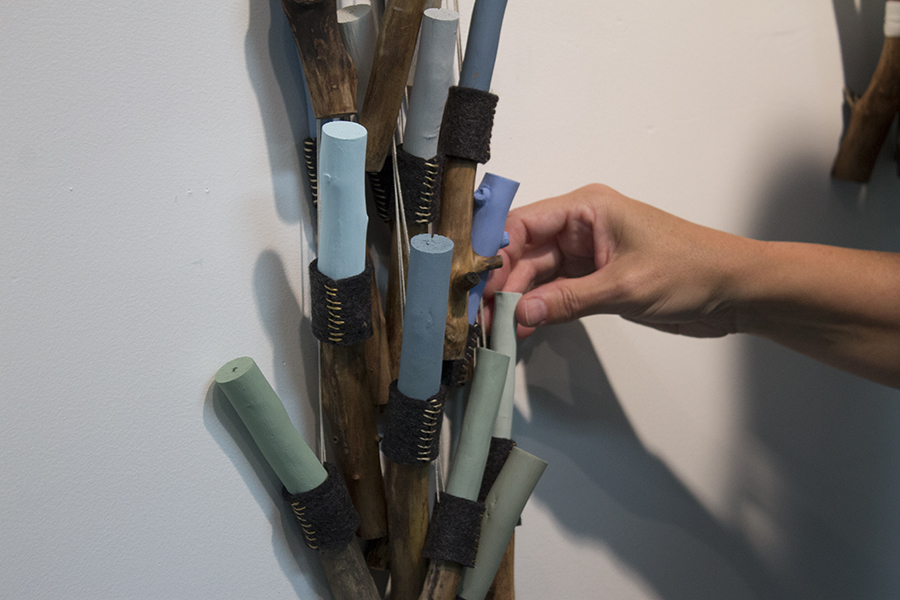
Do you have any advice for other artists out there?
What might be of interest to me and what drives my work might be completely opposite of what will work for the next artist. I can’t really say what inspiration might be for someone else.
More generally, you just have to work really hard at whatever it is that you are doing. Since art can be anything, whatever it ends up being for you, you have to really pursue it, whatever that means. What working hard for one artist looks like might be totally different for another artist. The person has to know what that is and really go after it and not give up on it. You just have to keep clawing away at it even if it takes a long time.
Specifically to artists here, because it is such a comfortable place to live, which is nice but people get really complacent and don’t push things. I think about this a lot when I am teaching. I really want the students to know what kind of competition is out there. There is a lot of totally amazing artists out there who are doing whatever they can to make their work. They are going to amazing lengths to make really super amazing things. That is who you are ultimately competing against in the larger sense of things and being able to further your career as an artist. People get complacent here and they don’t realize that larger art world out there and what is going on. They are just satisfied with whatever they do. The thing that blows me away is that there is not that healthy competition where people get super excited about what they are doing and really push their work. Even if they are totally making a mistake and doing something that is ultimately not that great, there is not a lot of that push, especially with the younger artists. That is the perfect chance to do something really out there. There is too much safe work. Any time you have a chance to really push it, you should do it. You have to understand what is out there. We are so isolated and there are not a whole lot of galleries showing the work of artists from outside of here that you just don’t get to see that much stuff.
Creators, Makers, & Doers highlights the lives and work of Boise artists and creative individuals. Selected profiles focus on individuals whose work has been supported by the Boise City Dept. of Arts & History.